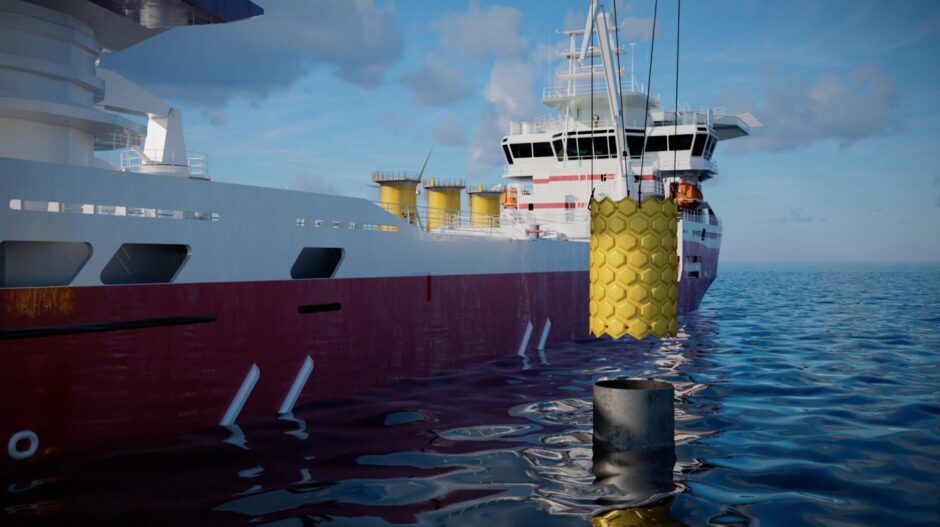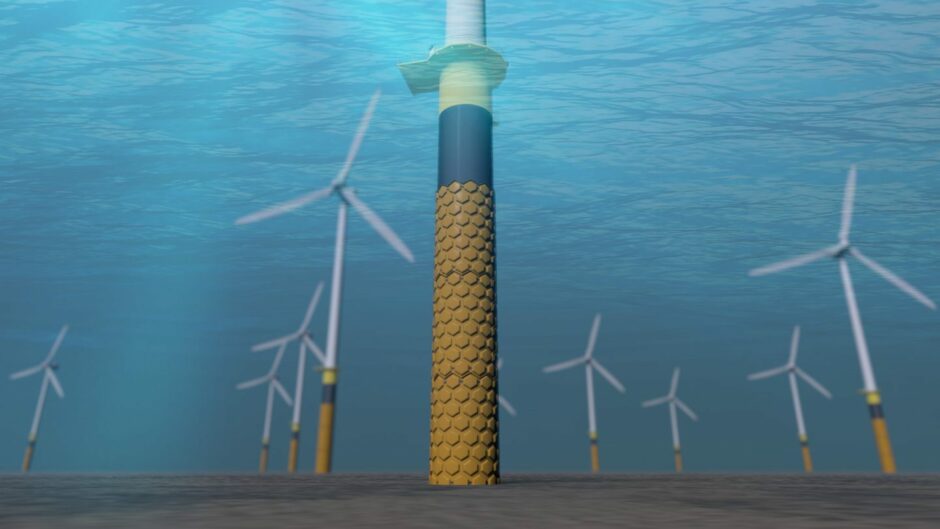
The Aberdeen-based firm, Balmoral, is set to expand further into renewables as it looks to provide scour protection solutions for offshore fixed wind installations.
The company has brought a globally patented product to market which aims to reduce the scour phenomena around fixed wind turbines that cause seabed erosion and a reduction in foundation strength and stiffness.
To reduce the consequences of this, scour protection is used to defend the seabed around a monopile structure.
Balmoral has developed Balmoral HexDefence, an exclusive scour protection system that integrates seabed protection and flow reduction to minimise offshore operational costs and potential cable failure.
The firm believes this solution will save wind farm developers “70% in installation costs.”
Other defences are made from rock, concrete or a specially designed geotextile fabric, however, Balmoral claims that its product eliminates the requirement to dump rock, instead providing a non-invasive approach to protecting the monopile and the immediate surrounding area.
The Aberdeen firm’s solution uses antifouling coatings and does not require special equipment for end-of-life recovery.
Earlier this year Balmoral said it was “ready to go” on new offshore wind factories ut the lack of but standardisation in the space was stopping the firm from pulling the trigger.
Balmoral’s engineering and projects director, Fraser Milne, said: “We believe Balmoral HexDefence represents a significant step forward for scour protection, offering highly cost-effective performance enhancement across installation, management and maintenance.
“The interlocking panels are generally 10m long and custom-sized to fit varying monopile diameters and feature integrated lifting and access points. In simple terms, the installation process involves sinking the foundation, sleeving it with HexDefence, fitting the transition piece and assembling the pylon and blades.
“The system is also suitable for retrofitting to existing monopile structures.”
Balmoral says it has had “positive discussions with leading wind farm developers and industry bodies” and has been encouraged to bring the product to market “as soon as possible.”
Preliminary work on HexDefence was based on existing VIV suppression products used widely by the oil and gas sector.
The research considered a scaled variant to investigate scour evaluation on downstream flow and the effect of accelerated currents around the monopile. Final prototype testing was completed at a national hydrodynamic laboratory
Mr Milne added: “We believe the system can save wind farm developers around 70% in installation costs when compared to traditional rock dumping methods.
“With the exponential growth of offshore wind worldwide we believe Balmoral HexDefence can be a key financial enabler and a critical infrastructural element of future offshore fixed wind farms.”
Recommended for you


 © Supplied by Balmoral
© Supplied by Balmoral